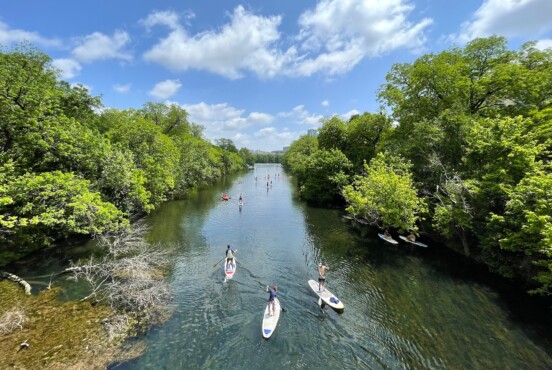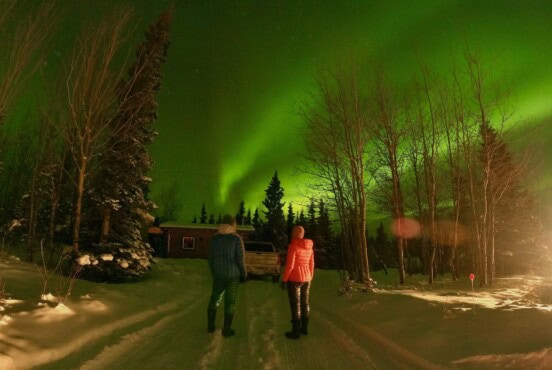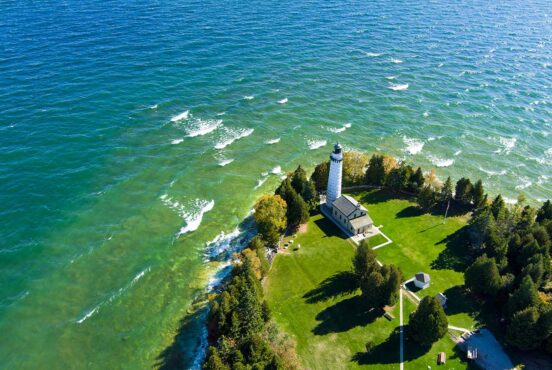We research, evaluate and select travel destinations based on a number of factors, including our writers’ experience, user reviews and more. We may earn a commission when you book or purchase through our links. See our editorial policy to learn more.
We’ve ranked America’s six largest airlines to decide which are best for adventure travelers this summer and beyond.
Many airlines base their businesses around corporate travelers and massive leisure destinations like Orlando or Las Vegas. But for adventure travelers — those looking to explore the outdoors — daily nonstops to New York’s JFK airport and all the amenities offered in first class probably don’t mean that much.
So, we’ve ranked America’s largest carriers based on their frequency to outdoor destinations, baggage policies (especially for oversized sports bags), and general customer service ratings to find out which are the best for travelers looking to explore the great outdoors. Here are the best airlines for adventure travelers.
6. JetBlue
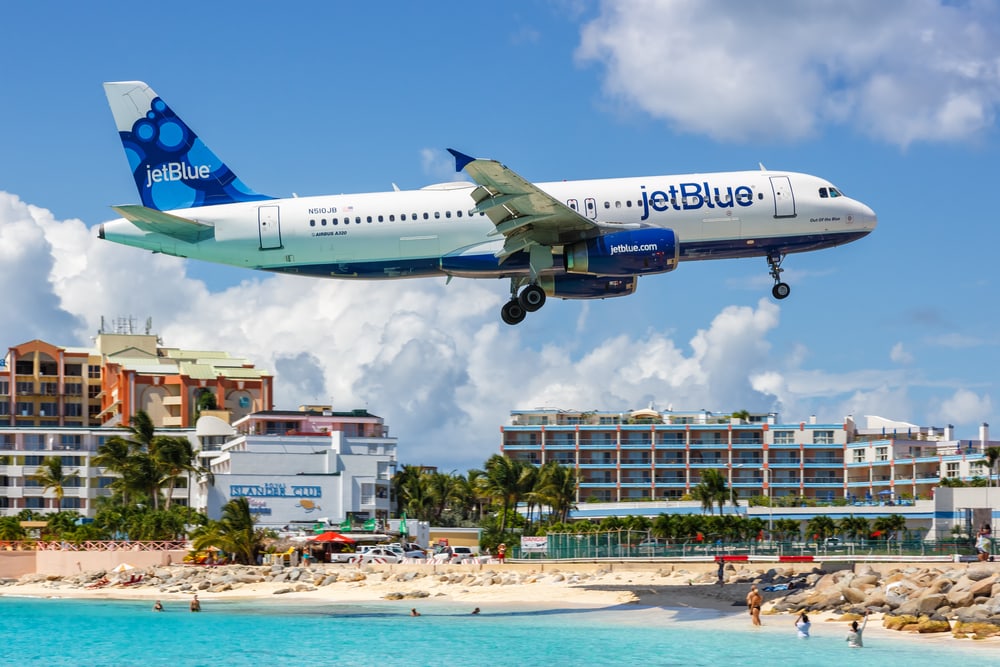
Hubs: New York City, Fort Lauderdale, Boston, San Juan, Orlando
What was once America’s cool, young airline, offering amenities that bigger airlines weren’t, JetBlue has sadly fallen from grace. Nowadays, the airline feels dated and is often found sludging around with the low-cost carriers.
- Pros: With great connectivity on the east coast and the Caribbean, it’s ideal for East Coasters looking for a tropical escape.
- Cons: Old aircraft, a focus on major cities that don’t offer much outdoor access, and basic fares that don’t even include a carry-on — JetBlue ain’t what it used to be. The airline also had an abysmal on-time arrival average for 2022, only getting passengers to their destinations on-time 64.6% of the time…Yikes! They’re also not part of any airline alliance.
In the early 2000s, when other airlines were cutting back on amenities, JetBlue stunned the nation by offering free bags, leather seats, and seatback TV screens for every passenger.
But 20 years later, things have changed. Other airlines, like Delta, also offer seatback entertainment — on much bigger screens and with a much larger variety of movies and shows. JetBlue also no longer offers free checked bags like it used to (its baggage fee is now $35 for your first bag), and their basic fares don’t even include a carry-on, which will now cost you $65, meaning you should expect to pay more than the ticket price unless you plan on traveling without any kind of luggage.
Fortunately, the airline counts most sports equipment bags as standard checked luggage and they’ll only be charged the standard fee (more if it’s overweight). Larger items like surfboards, bikes, and kiteboards have their own additional $100 handling fee.
With its hubs heavily centered on large, urban East Coast cities, the airline also doesn’t have much of a presence in the outdoors space. The one plus is that JetBlue has a good number of daily nonstop flights to Puerto Rico and the Caribbean from Boston, NYC, and Fort Lauderdale. So, if you happen to live in those cities and are a fan of watersports, deep sea fishing, or simply drinking on the beach, this might be the airline for you.
5. American Airlines
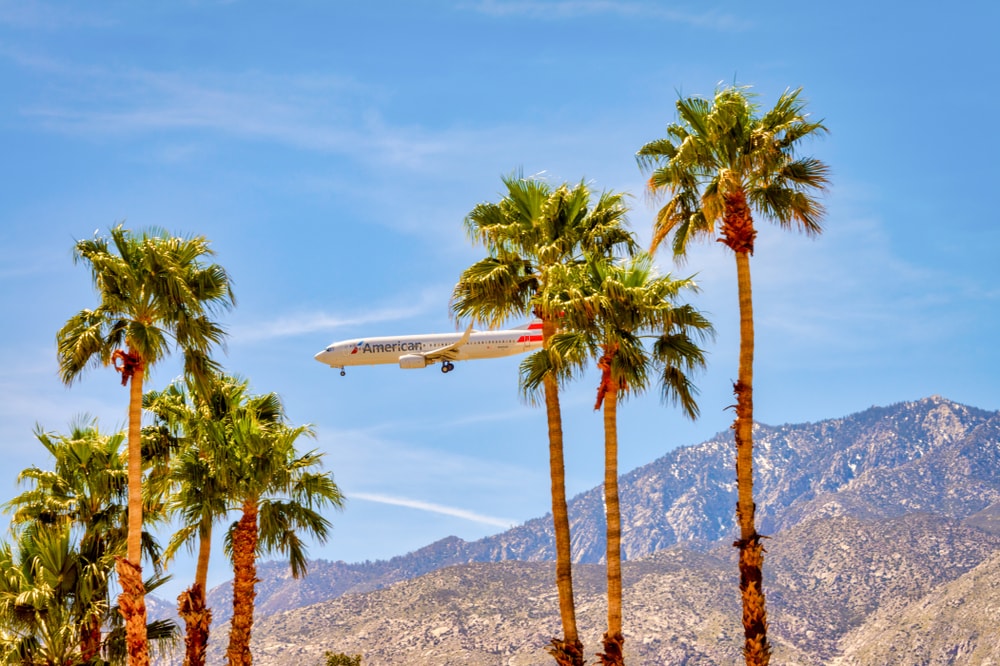
Hubs: Phoenix, Charlotte, Miami, Dallas, Philadelphia, Washington DC, NYC
As one of the world’s largest airlines, American offers access to tons of destinations, and being part of the OneWorld Alliance gives you even more access to international destinations.
- Pros: Large airline with tons of daily flights all over the world.
- Cons: With hubs in cities like Dallas, Philly, NYC, and Washington DC, the airline’s main presence isn’t exactly where most adventure travelers want to be going.
American Airlines is a mixed bag: it’s a massive airline, so it has great connectivity to its hubs and focus cities from most towns around the country. The downside is that a large bulk of American’s daily flights go to places like Charlotte, Philly, New York City, Washington DC, and Dallas — not hotspots for National Parks or epic adventures.
However, it does have a hub in Phoenix, which is the gateway to Sedona, so there are tons of daily nonstop flights from cities all over the country to Arizona’s famed hiking and golfing destinations in the Sun Corridor.
The airline’s baggage policy for most sporting equipment is pretty standard — most items count as a normal bag and are charged the standard $30 fee for your first checked bag. However, American’s website also claims that during the Thanksgiving/Christmas season, it has “seasonal bag pricing” but the amount isn’t stated. Hidden fees like that are why American is often one of the country’s worst-rated airlines.
4. Southwest Airlines
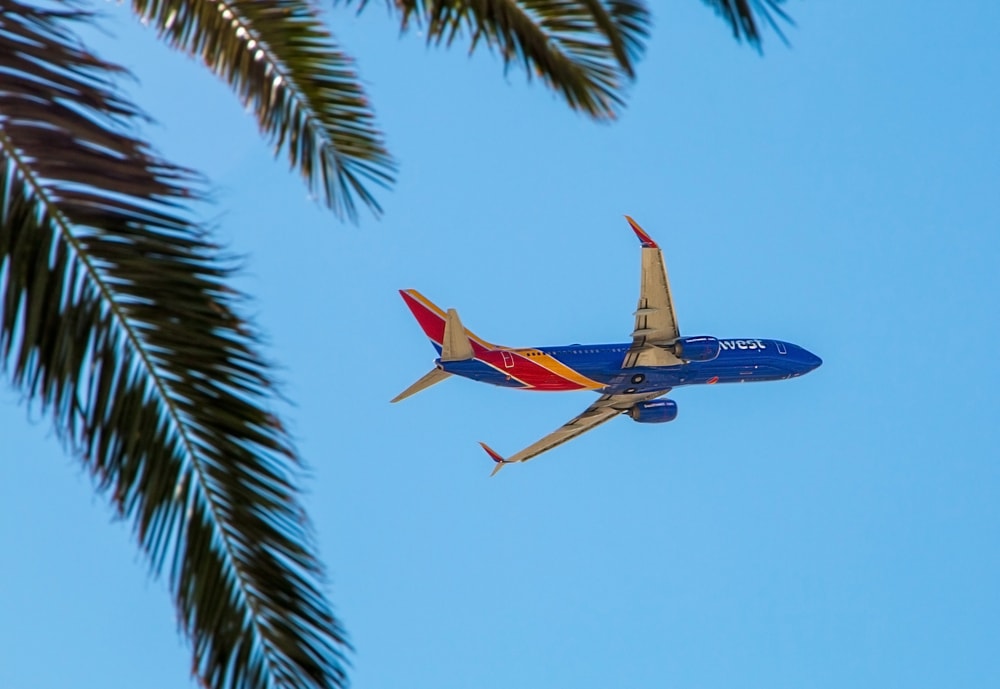
Hubs: Dallas, Nashville, Baltimore, Chicago, Austin
Why fly Southwest? Their famous baggage policy: two checked bags and one carry-on, totally free!
- Pros: The main selling point is Southwest’s amazing baggage policy. Every customer gets 2 checked bags and a carry-on for free.
- Cons: Because Southwest operates on a point-to-point system instead of hubs, there’s a good chance you’ll have a layover on almost any flight you have with them. Also, the planes have no in-flight entertainment and don’t provide snacks, so for longer flights, be sure to stock up at the airport.
The obvious pro of Southwest is its baggage policy. Better yet, most sporting equipment, like golf bags, snowboards, and even surfboards count as one of your free bags. Larger and specialized items like bikes and kayaks can also be transported for a fee of just $75.
However, Southwest also has quite a few cons. Their first-come first-serve seating policy is an absolute nightmare and usually brings out the worst in people, and no in-flight entertainment makes for a very boring flight, especially if you’re going long distances.
Another con is that Southwest’s historically cheap fares continue to get higher and higher. For example, booking from September 12-15 between Portland and Milwaukee, Southwest had a round-trip fare for $407.96 with a layover each way. Delta had the same flight for just $326.40. Don’t be fooled by Southwest’s reputation as a low-cost carrier, since it sadly isn’t always the most affordable anymore.
3. Alaska Airlines
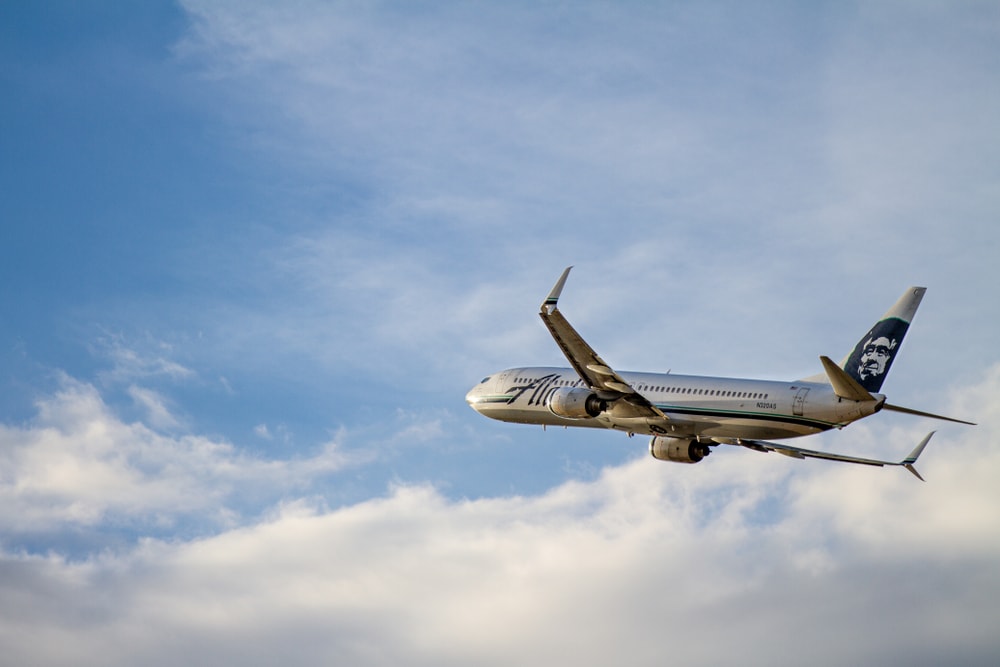
Hubs: Anchorage, Seattle, Los Angeles, San Diego, Portland (OR), Boise
This is the airline for adventure travelers. The airline specializes in the Lower 48’s most rugged and beautiful locations, and it even takes passengers up to Alaska where it offers connections to tons of destinations in The Last Frontier…but there’s one massive downside.
- Pros: Tons of daily nonstop flights take you to oceans, mountains, forests, and even glaciers.
- Cons: Unless you live on the west coast where a vast majority of their fleet is, the airline isn’t very useful.
A fantastic airline that’s often rated highly by customers, Alaska is one of the smallest legacy carriers in America, but in the last decade, it has grown considerably. However, it still hasn’t grown enough to be useful to a majority of the country.
If you don’t live on the west coast, service is spotty. For example, Charlotte is the 10th busiest airport in the country, but Alaska doesn’t even fly there. And in cities like Pittsburgh, Cleveland, and Detroit, the only Alaska flights you’re going to find are to Seattle (which is great for anyone who wants to explore the Cascades or San Juan islands).
Sports bags count as standard checked bags — $30 for the first bag. Alaska also has an awesome policy where they’ll waive the additional overweight bag fee for most sports equipment if they happen to be overweight.
But the real highlight of Alaska Airlines is (obviously) its connectivity to Alaska. For travelers who want to explore America’s most rugged state, the airline can take you to the major cities like Anchorage and Fairbanks as well as destinations like Kodiak, Nome, and even America’s northernmost town, Utqiagvik (Barrow). Alaska also partners with the regional airline Ravn, which can take you to even more remote parts of the state.
2. Delta

Hubs: Los Angeles, Salt Lake City, Twin Cities, Atlanta, Detroit, Boston, Seattle, Amsterdam
From the Great Lakes to the Wasatch Mountains, and even Puget Sound, Delta is a massive airline that has hubs in some of America’s coolest and most epic locales.
- Pros: Most planes are newer and have in-flight entertainment, and Delta has the best on-time arrivals of any airline in America. Plus, its hubs are surprisingly good for outdoor adventure.
- Cons: Delta isn’t exactly known for being cheap.
Thanks to its hubs in Seattle and Salt Lake City, Delta offers a great launching point for anyone looking to explore mountain towns like Park City, visit Utah’s Mighty 5, or traverse the emerald forests of the Pacific Northwest. Plus, Detroit and Minneapolis are great jumping-off points for anyone who wants to journey along the Great Lakes or paddle through Minnesota’s 11,842 lakes — including those that help make up Voyageurs National Park.
As with most other carriers, Delta allows sports bags to count as part of your standard checked baggage — $30 for your first bag. Plus, Delta has partnerships with both Lyft and Airbnb, so frequent flyers can earn Delta Skymiles by using those services. That’s an excellent perk, especially for adventure travelers, since many will likely be choosing cabin rentals instead of hotels.
The biggest downside is price. As mentioned before, Delta is rarely the cheapest option when flying. Granted, it’s important to remember that almost all of their planes have seatback TVs, every ticket includes a carry-on, and every flight serves snacks and drinks — but for anyone who purely looks for the cheapest upfront ticket price, Delta likely won’t have it.
1. United Airlines
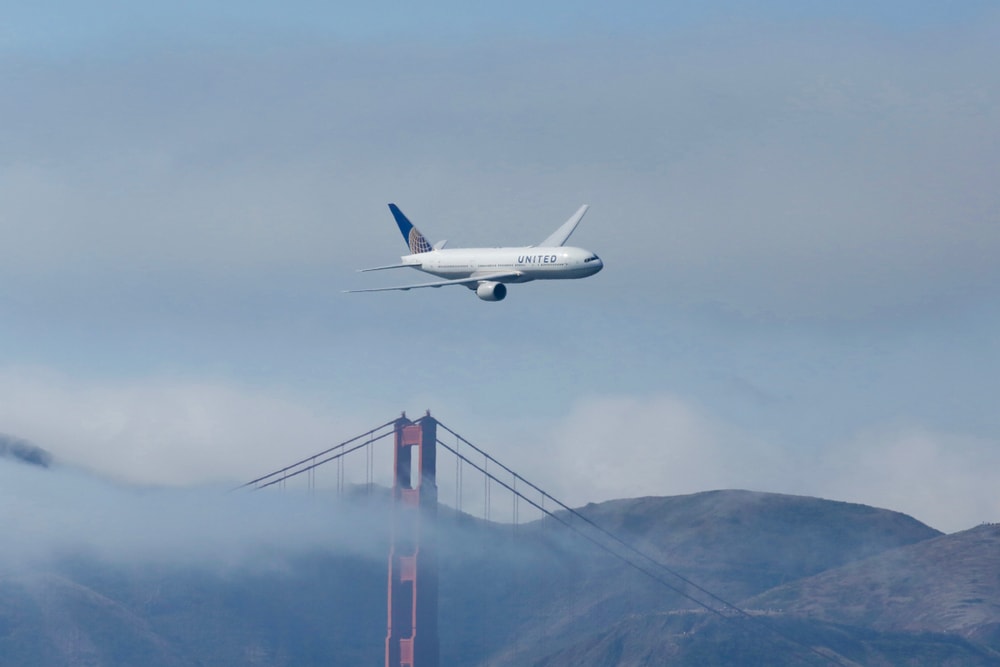
Hubs: Denver, San Francisco, Los Angeles, Houston, Guam, Chicago
Thanks to its dominance in both Colorado and California, United puts passengers close to some of the most famous adventure destinations on the planet. Plus, they even have a hub in Guam for anyone who’s looking to explore coral reefs or hike through a rainforest.
- Pros: United goes to some great destinations, and even cooler, surfboards fly free on flights to and from California!
- Cons: Some tickets do not include a carry-on, meaning you’ll end up paying more than your ticket price.
Despite its shortcomings, like charging passengers extra for carry-ons, United is still the best airline for adventure travelers because of its daily nonstop flights from California and Denver to cities all around the country. With United, virtually anyone in any city across America can be a stone’s throw from the Rocky Mountains, Sierra Nevada, or the Pacific Coast in just a few hours.
Their hub in Guam is also a unique feature that no other US airline has. From there, travelers can explore the island or head out on connecting United flights throughout the South Pacific to the Marshall Islands, Palau, the Marianas, and more. For water-lovers, divers, and snorkelers, it could be the trip of a lifetime.
And we can’t forget their awesome surfboard policy. With hubs in both LA and San Francisco, it’s natural for the airline to embrace its California home, and to celebrate they let surfboards fly free of charge on flights to and from the Golden State.
Find Your Next Adventure
Get epic travel ideas delivered to your inbox with Weekend Wanderer, our newsletter inspiring thousands of readers every week.
Seen in: Travel






